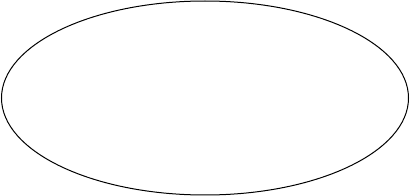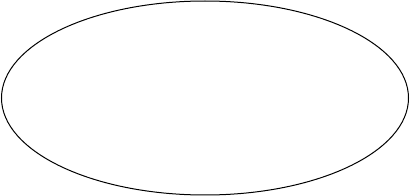Phillips D., Young P. Online Public Relations
Подождите немного. Документ загружается.


THIS PAGE INTENTIONALLY
LEFT BLANK
116

Part 3
Building blocks for online PR

THIS PAGE INTENTIONALLY
LEFT BLANK
118

119
Communications
platforms
In Chapter 2 we discussed a range of channels for communication, and
we deal with channels in greater depth in Chapter 17. In this chapter we
explore the nature of the platforms those channels use.
There are many ways that people engage with the internet and, naturally,
they are available to practitioners too. As well PCs and laptops, devices
like television or radio sets, mobile telephones, game machines (yes, Xbox
and Play Station are included too) and static and mobile VoIP sets (let’s
call them Skype phones for ease of understanding) are all platforms for
communication.
We use communications channels such as e-mail or blogs on platforms,
and we o�en use a range of platforms to deploy different channels. For
example we can send SMS messages (using the SMS ‘channels’) from a PC
or laptop as well as from a mobile phone.
We need not stop there. There are many other platforms available to
the consumer, including, for example, e-Paper, a flexible sheet that can
be digitally updated, which has a place alongside newsprint and books,
and internet-enabled e-posters (posters that can be digitally updated),
which have a place alongside posters, signage and even computer and TV
screens.
It is not unusual for platforms to offer capabilities they were not designed
for. SMS messaging from mobile phones was added for occasional use. The
13

Building blocks for online PR
120
Practitioners with the imagination to deploy platforms in new ways will
be among the most effective communication pioneers. Such applications
might come from technologies such as near-field electromagnetic ranging
(NFER), real-time location systems (RTLS), radio-frequency identification
(RFID – the most sought-a�er tickets to the opening and closing ceremonies
at the Beijing Olympics were RFID-enabled) and contactless ‘smart’ cards
(like the Oyster card used by London Underground). They allow small
amounts of data to be transferred between smart devices and receivers.
These channels mean that there will never again be a need to register at an
exhibition because the embedded technology in the tickets will have all the
information and can transmit it to computers for visitors to gain admission.
In retailing, such technology will mean that the supermarket checkout is,
well, on its way out.
extraordinary success of SMS was not anticipated and yet has become one
of the most widely used of all modern communications channels. It has
evolved too. It is now possible to send photos by SMS. Until very recently
PCs were not designed to deliver video or television programmes but today
this is one of their most common uses.
It’s actually quite easy to turn your Sony PlayStation into a fully fledged
PC, which is great for adding media and productivity and flexibility to
the black box beneath your TV. If you dig into the Settings, then System
Settings menu you’ll find an option to Install Other OS. Then by following
some simple instructions (at http://psubuntu.com/wiki/InstallationInstruc
tions) you can download a copy of the operating system, burn it to a CD or
DVD, and then install it onto your console’s hard drive.
Viviane Reding, Member of the European Commission responsible for the
information society and media, at the 2008 OECD Ministerial Meeting
on the future of the internet economy in Seoul, Korea, noted that: ‘RFID
and sensor technologies embedded in products will not only significantly
impact on business organization and efficiency, but also impact our daily
life.’
There are new platforms on their way. The mobile phone is due for a major
revolution, with iPhone and its more advanced cousins already in the
shops.

Communications platforms
121
Speakers at the 3rd Mobile Pricing Symposium, organized by research
firm Tariff Consultancy in 2008, forecast that mobile data services will
continue to be the main driver of growth in the mature markets until 2012.
Mobile broadband pricing declined by more than half in real terms between
2004 and 2007, with more broadband capacity being available for the same
price.
The recent availability of easily portable mobile data connections (such as
the USB modem – usually called a ‘dongle’) means that mobile data services
have become a mass market consumer item.
MOBILE PHONES ARE PIGGY BANKS
Two hundred Manchester City season ticket holders trialled a system
through which they ‘show’ their Nokia 3320 handset to an automatic
reader to get into a game, instead of handing a card to a gate attendant.
In Estonia mobile phones can be used in a similar way to pay taxi fares
and bar bills. Many people use satellite navigation in their cars. These
devices can also be used to provide a wide range of information about
routes, local restaurants and beauty spots, and already ‘talk’ to mobile
phones and thence to the rest of the internet.
These platforms can be linked using internet protocols by traditional phone
cables, by radio in many forms, including wireless local area networks
(WLAN – o�en known as WiFi), infrared (o�en used in phones and the
cable-free computer mouse), Bluetooth, cellular telephony, broadband over
power lines (BPL) using the grid and domestic power cables, and the simple
Universal Serial Bus (USB) devices and cables.
Microso� Surface is a new platform that offers web and internet services
without a keyboard or mouse but with flat touch screens.
A ring, necklace, watch and earring set announced by IBM will look like
standard jewellery but has a difference. The ring flashes to alert you to
an incoming call. The caller’s number is displayed on your watch and you
can answer the call by pressing a button on the same watch. You can hear
the caller through a tiny speaker in the earrings and the necklace holds a
microphone to speak into. From almost any organisation except IBM this
would sound far-fetched. The company is also working on emotion sensing,
monitoring body temperature, heartbeat and moods. This information can
then be transmitted over the internet and others can gain access to it.

Building blocks for online PR
122
Practitioners can think of these platforms in the same way that they might
think of newsprint, magazines, radio, television, film and other platforms
for communication.
For PR practitioners, the use and application of communications plat-
forms is limited only by the extent of their creativity. Imagine a satellite
navigation device that offers a story about a company as the driver passes
by – such devices are already being deployed at the hi-tech end of online PR
but one can imagine a wannabe celebrity broadcasting her presence in the
street to mobile phones nearby, and shops offering discounts to passers-by
when footfall drops off in store.
We are all used to ge�ing money from an ATM on the street. These internet-
enabled platforms and the information kiosks to be found on many a street
corner are part of this mix of channels.
Most people, for the most part, do not notice these changes taking place.
They are gradual and quickly form part of daily life. How many Londoners
now find the Oyster card strange or think of it as a channel for commun-
ication? Oyster cards are ge�ing very clever.
Working with Transport for London, researchers at the Imperial College
Internet Centre are using tag devices, a technology used in Oyster cards,
to process and send information about delays and engineering works to
commuters to aid them in their travels. This tag technology can be em-
bedded into items such as railway posters or billboards at tube stations, so
travellers can access the latest transport information wirelessly transmitted
to their mobile phones. The same technology can be used for transmission
of other PR messages, of course.
Ofcom predicted in May 2008 that the Bluetooth wireless technology
that allows people to use a hands-free earpiece while making a mobile
telephone call could soon alert the emergency services when someone has
a heart attack. The communications regulator said that sensors could be
implanted into people at risk of heart attack or diabetic collapse that would
allow doctors to monitor them remotely. If the ‘in-body network’ recorded
that the person had suddenly collapsed, it would send an alert, via a nearby
base station at their home, to a surgery or hospital. A similar application
can alert carers when people have forgotten to take medication.
However, Ofcom also gave warning in its report, Tomorrow’s Wireless
World, that the impact of such technology on personal privacy would
require more debate.

Communications platforms
123
Is there an appetite for all these platforms? A 2006 Best of Stuff survey
suggested that 60 per cent of UK consumers spend £5,000 on gadgets every
year, with 30 per cent of those surveyed saying that they have 15 gadgets
in total.
What is really big about these devices? It’s unnerving. Many of them
can be used for a range of two-way communication. We know this of the
ubiquitous PC and mobile phone, but what of an e-poster? One that can
interact with a mobile phone. In Japan a user can already ‘pull’ information
from them! Progressively, this interconnectedness of these platforms will
engage the consumer in ever more one-to-one, one-to-many, many-to-
many and many-to-one forms of interaction. And while we are pondering
these developments (and sending an e-mail from an Xbox games console
as one of the authors did when writing this book – and got a reply!), it
is worth noting that many of these platforms do not have a keyboard or
even a mouse; many do not use text, but use touch, pictures, graphics and
sounds.
The creative practitioner may find applications for voice-to-text in ap-
plications such as Twi�erphone that allow the user to make a phone call and
dictate a message that will almost immediately appear on the Twi�ersite,
a blog, web page or wiki, and can of course be downloaded to a mobile
phone.
Many practitioners will imagine that these platforms are not part of the
PR repertoire; many of them were doubtful about PCs; the mobile phone
was not considered a PR channel and the BlackBerry was thought to be a
toy until each in turn became a more or less essential part of working life.
Mobile devices like the iPhone have morphed away from being a tele-
phone to become fully fledged hand-held computers.
Between the first edition and the time of writing this book many new
platforms have emerged. We cannot predict what will happen in the coming
months and years but we can stay in touch with developments.
Constant evaluation of platforms is a structured activity. It should be one
of those activities that are the subject of investigation and brainstorming at
regular intervals. There are 10 practical measures practitioners can apply
to do to keep up to date with the current, emerging and new platforms for
communication:
Assess whether current campaigns can be executed on most relevant
platforms.
Decide what current activities can be enhanced with developments in
platform technologies.
Watch out for new channels and be a li�le curious about them.
Keep an open mind about these platforms.
Use imagination and creativity to seek relevant, sometimes innovative,
applications for these tools of our trade.

Building blocks for online PR
124
Re-examine who is using different devices (fashion changes).
Old platforms should always be considered. Is fax really dead?
Watch out for evolution such as photos and the web on mobile phones
(PCs being used like televisions).
Be aware of existing and emerging multiple applications like voice and
e-mail for games machines, near-field applications for mobile phones,
applications run from USB sticks, CDs, DVD and MP3 players, and
many more devices.
Reach. Some devices are only used by a few people and some are used
by many. Is the fashion for use changing?
IN BRIEF
Information is transmitted and received using a wide range of
devices.
These platforms can broadcast and deliver information using a wide
range of channels.
Delivery of information on different channels can be interpreted
differently by the receiver.
Many internet communications-enabled devices can be harnessed for
use with the internet.
The range of applications that evolve and can be used for different
communication purposes is largely untapped.
The range of platforms is growing all the time.
Evaluation can be structured and should be ongoing.

125
Channels for
communication
In the previous chapter we briefly described some of the devices people use
to communicate and build relationships online. We touched on the many
forms of communication that can use these internet-mediated platforms
Once upon a time, communication channels were le�ers and news-
papers, conversation and the town crier. The platforms were paper, ink,
meeting places and the market square. Now, there are many more channels.
The most common are e-mail, websites, instant messaging (IM) and recent
entrants like blogs, and photo and video-sharing sites.
The old channels have not gone away. Most communication channels
don’t. People still even use fax! As the American internet PR guru Shel
Holtz puts it: ‘New media does not kill off old media, but it does influence
and change it.’ Online PR is not an alternative to other forms of relationship
building, communication and interaction; it is an extension of what has
gone before.
Very few people use all the modern channels for communication. In fact
there is doubt as to whether anyone could. But most people use a few. They
will probably use SMS on a mobile phone, e-mail, websites and then some
others. This does not mean that communicators can only focus on these few.
The professional communicator needs an understanding of a very much
wider array of channels and needs to be able to deploy most of them directly
14
